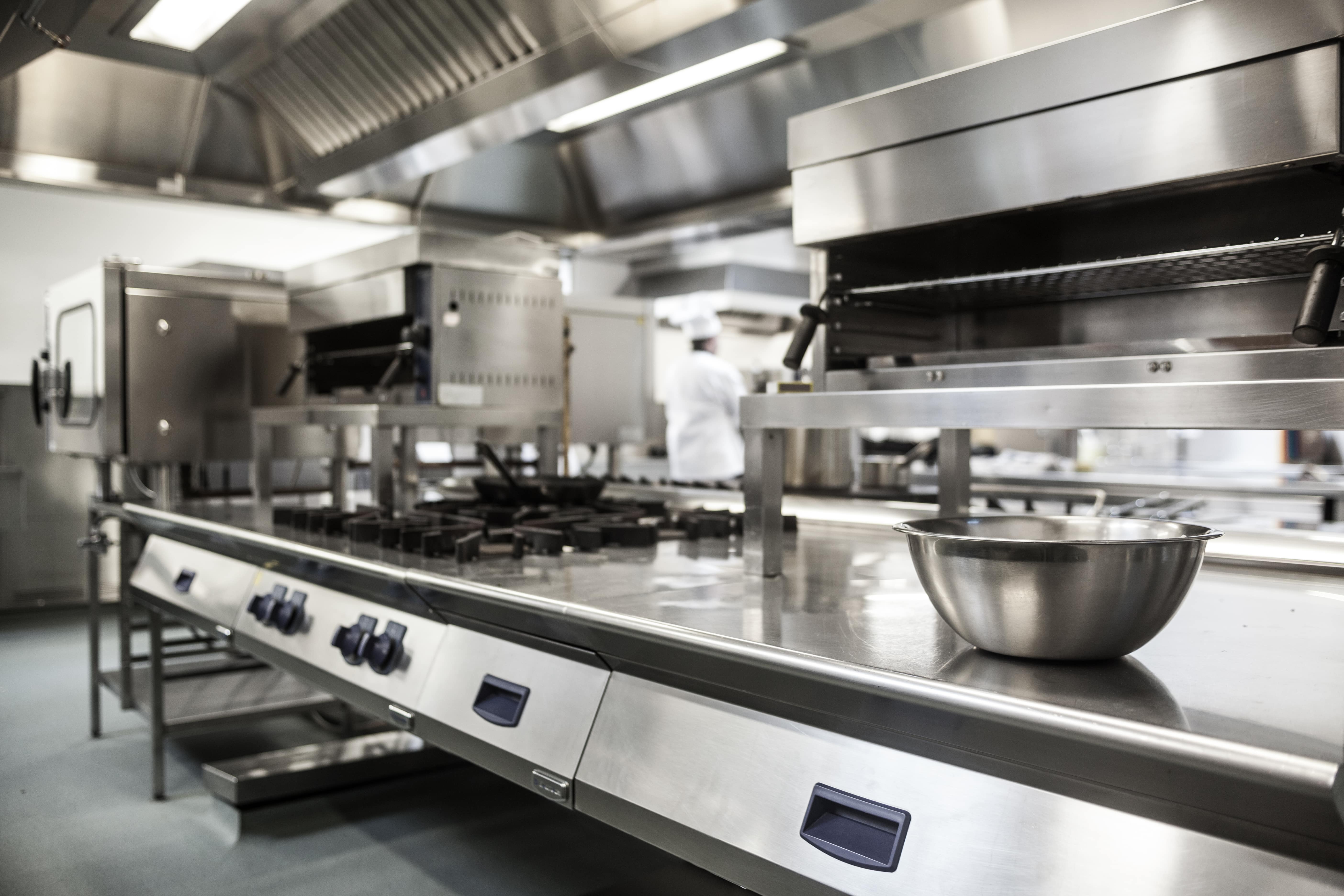
When it comes to school cafeterias, efficiency and functionality are key to ensuring smooth operations and providing nutritious meals to students. A well-designed cafeteria kitchen can significantly impact the overall efficiency, productivity, and experience of both the staff and the students. With innovative solutions, schools can create a kitchen space that maximizes efficiency, enhances productivity, and improves the overall dining experience. This blog will explore various innovative solutions for school cafeteria kitchen design and efficiency.
1. Smart Kitchen Layout and Workflow
One of the primary considerations in designing an efficient school cafeteria kitchen is the layout and workflow. A smart kitchen layout takes into account the various stages of food preparation, cooking, and serving, ensuring a smooth flow of operations. This includes strategically placing different workstations, such as preparation areas, cooking stations, serving counters, and dishwashing stations, to minimize movement and maximize efficiency.
The workflow should be organized logically, starting from the raw ingredients and ending at the serving counter. By streamlining the workflow, staff members can work together seamlessly, reducing bottlenecks and improving overall efficiency. A well-designed layout also allows for proper ventilation and sufficient space, ensuring a comfortable working environment.
2. Energy-Efficient Equipment
Energy efficiency is not only important for environmental sustainability but also essential for cost savings. Investing in energy-efficient equipment can significantly reduce energy consumption in a school cafeteria kitchen. Look for appliances with high energy-efficiency ratings, such as Energy Star certified equipment. These appliances are designed to use less energy while still delivering top performance.
Consider using energy-efficient cooking equipment, such as induction cooktops and convection ovens, which use less energy compared to traditional alternatives. Additionally, automated HVAC systems can help regulate temperature and ventilation in the kitchen, further reducing energy waste.
3. Ergonomic Design and Equipment
An ergonomic design and equipment can significantly improve the comfort and safety of kitchen staff, leading to increased productivity and reduced injuries. Ergonomically designed workstations, sinks, and countertops ensure staff members can work comfortably and efficiently, minimizing strain and fatigue.
Investing in equipment designed with ergonomics in mind is also crucial. For example, using adjustable-height worktables and chairs can accommodate staff members of different heights and reduce the risk of musculoskeletal disorders. Similarly, using ergonomic kitchen tools and utensils can improve efficiency and reduce the strain on users’ hands and wrists.
4. Advanced Food Preparation Technology
Innovation in food preparation technology has revolutionized kitchen operations, making tasks quicker, more accurate, and more efficient. Schools can take advantage of advanced food preparation equipment to save time and improve the consistency and quality of their meals.
For instance, automated cutting and slicing machines can swiftly prepare ingredients, reducing manual labor and improving accuracy. High-speed blenders and food processors can efficiently puree or blend ingredients for soups, sauces, and smoothies. Sous vide cooking techniques, facilitated by precision temperature control equipment, can ensure consistent and perfectly cooked food every time.
5. Smart Storage Solutions
Efficient storage plays a vital role in minimizing waste, ensuring food safety, and facilitating easy access to ingredients and supplies. Smart storage solutions can help optimize space, prevent cross-contamination, and improve inventory management in a school cafeteria kitchen.
Consider using shelving systems with adjustable shelves to maximize vertical space utilization. Utilize labeled and color-coded food storage containers to easily identify different ingredients and avoid confusion. Installing walk-in refrigerators and freezers with proper organization systems can streamline the storage of perishable goods.
Additionally, employing inventory management software can help track ingredient quantities, expiration dates, and restocking needs, minimizing waste and ensuring a well-stocked kitchen.
6. Integrated Technology and Automation
Integrating technology and automation into a school cafeteria kitchen can significantly enhance efficiency and productivity. Various technological advancements can streamline processes, reduce errors, and improve communication.
Investing in a kitchen management system can help automate and optimize tasks such as menu planning, recipe scaling, and nutritional analysis. This not only saves time but also ensures accurate and consistent menu offerings.
An automated point-of-sale (POS) system can simplify order processing and payment, reducing wait times and increasing customer satisfaction. It also provides valuable data for analyzing sales trends, identifying popular menu items, and making informed decisions.
7. Sustainable Practices
School cafeterias have an opportunity to lead by example and promote sustainable practices. Implementing eco-friendly initiatives contributes to environmental preservation and helps reduce operational costs in the long run.
Consider incorporating recycling stations in the kitchen to separate recyclable materials from waste. Installing energy-efficient lighting fixtures, such as LED lights, can reduce electricity consumption. Moreover, incorporating composting programs for food waste can divert organic matter from landfills, creating nutrient-rich soil for gardening.
8. Staff Training and Continuous Improvement
Lastly, ensuring that staff members are well-trained and continuously updated on the latest practices and equipment is essential for maintaining efficiency in the school cafeteria kitchen. Providing regular training sessions and workshops fosters a culture of continuous improvement and ensures that staff members are knowledgeable about using equipment effectively, following proper hygiene practices, and maximizing efficiency.
Contact Us Today
Innovative solutions for school cafeteria kitchen design and efficiency can greatly impact the overall operations, productivity, and experience of both staff members and students. From smart kitchen layouts to energy-efficient equipment, incorporating ergonomic design to advanced food preparation technology, and considering sustainable practices, schools can create a kitchen space that optimizes efficiency and enhances the dining experience.
Mathias FoodService Equipment and Design understands the importance of a well-designed, efficient kitchen and is dedicated to helping schools, businesses, and assisted living facilities achieve their goals. You can be assured of the highest quality equipment, impeccable design expertise, and exceptional customer service by working with us. Contact us to learn how we can help you build a kitchen that exceeds your expectations.

